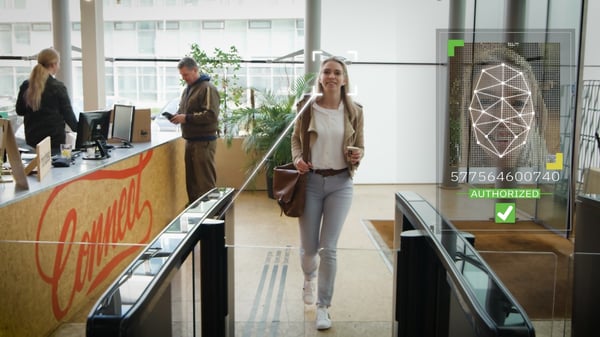Due to the global outbreak of COVID-19, business executives are thinking about future changes to their buildings for increased employee safety. Aside from social distancing, staggered operating shifts and temperature readers, facility managers are being told to make every door at the building envelope and within “touchless.” Not only do these entrances need to be hands-free, but they must also operate safely.
We see this shift to contactless entry as a two-step process. The initial step fulfills the need for touchless entry, while the second addresses a new issue as a result – compromised security.
Step 1: Automatic Swing Doors - Solving One Problem While Introducing Another
Organizations are scrambling to make all entrances across their buildings touchless. A quick solution to this problem comes by way of retrofitting existing swing doors with low-energy, electric operators. Though an easy and timely fix, this new entrance process opens the way for bigger issues. Read on…
Traditional Use of Manual Swing Doors
Let’s first consider how someone uses a manual swing door. An employee either opens or badges at the swing door, the door unlocks, and the user grabs it with one hand. They typically pull the door open roughly 45-60 degrees and “slither” in. As they are entering the building, the door has already begun the closing process and will typically re-latch in a second or two. The door never reaches its full 90-degree potential and, thus, it is harder for someone else to tailgate inside without collusion.
 Weakness of Automatic Swing Doors
Weakness of Automatic Swing Doors
As facility managers begin to upgrade their manual doors with automatic, low-energy electric operators, the typical way of entering, as mentioned above, changes. How so?
Well, the employee will still badge or use a hand-wave sensor to enter the building through the swing door. The door will unlock and open slowly using a low-energy drive (originally designed for ADA entry). However, now the door will proceed to open a full 90-degrees and remain open for a few additional seconds before closing.
So, increased automatic swing door use will have a significant impact on security. The door simply won’t close two seconds after someone steps in. It could remain open for up to 10 seconds in some cases and be an easy way for someone unauthorized to gain access to any part of the building.
 Step 2: Automatic Security Doors & Turnstiles - Touchless and Secure
Step 2: Automatic Security Doors & Turnstiles - Touchless and Secure
While automating your existing swing doors provides a timely fix to one problem, this create a new, downstream problem: the potential for unauthorized people in your building. The risks and liabilities that are associated with tailgating at swing door entries could be theft, employee safety, regulatory fines and human resource issues.
How do you solve this downstream problem?
By implementing a tailgating detection or prevention strategy using optical barrier turnstiles or security revolving doors, organizations can provide a touchless and secure entry experience for all users. And while some organizations might not be able to deploy security entrances across their entire facility or campus, security revolving doors and optical barrier turnstiles work great in a layered security strategy.
 Click here to read more about how security entrances provide a touchless experience. And contact one of our entry experts to discuss implementing touchless security entrance solutions at your building.
Click here to read more about how security entrances provide a touchless experience. And contact one of our entry experts to discuss implementing touchless security entrance solutions at your building.

